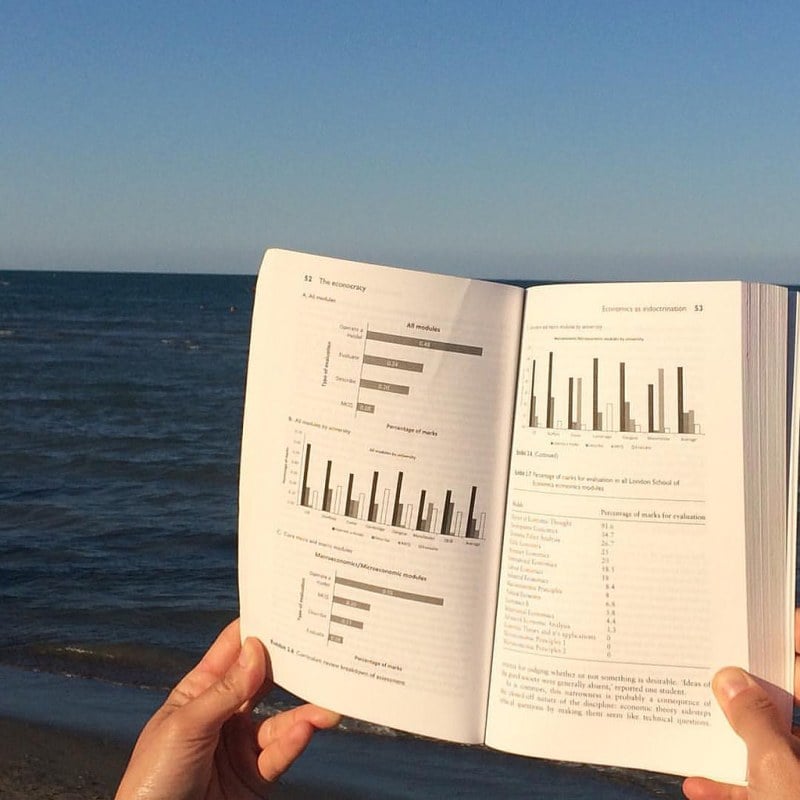I am an economics major, which means I’m quite familiar with the idea of core requirements. In the Econ department, you are required to take six classes towards the beginning of your academic career — ECON 1, 50, 51, 52, 102A and 102B — before you can take many of the electives and upper-division classes in the department. For freshman and sophomores, this means a long slog through budget equations, supply and demand graphs, and deriving complicated formulas about interest rates and growth models that seem to include as many variables as there are letters in the Greek alphabet. (You know it’s bad when the professor has to spend time trying to come up with a Greek letter that hasn’t yet been added to an ever-growing equation.)
The core has its peaks and valleys. Among the peaks for me were those moments in the statistics requirement when I understood, in a flash of p-set success, just how powerful regressions and confidence intervals can be. At the other end of the spectrum, I have spent many evenings staring at equations, eyes glazed over in total non-comprehension, wondering how economics can call itself a ‘rigorous discipline’ when its fundamental models assume things like zero population growth, total rationality and two-item economies. If an alien arrived on Earth and found only a p-set from ECON 50, it would think our world was a land full of robots who only consumed apples and bananas.
After talking to other students about core requirements, it seems fair to say that the Economics department is not the only department with a difficult and sometimes overly abstract core curriculum. We are all in some form or another — through PWR, if nothing else — subjected to classes that we may not find intrinsically interesting or meaningful all the time.
This surprised me when I first arrived at Stanford. College, I thought, was supposed to be about learning for the sake of learning, about the immediate gratification of world-expanding insight being taught in the classroom. I was supposed to spend class periods learning about how the Fed responds to labor shocks, how tax structures determine social outcomes and why communism doesn’t work so well in practice from an economic perspective. Instead, lectures often involved people named Bob and Jane, who often lived alone on islands where the only thing they could produce was coconuts. Not exactly the Keynesian response to the 2008 recession I was hoping for.
It was not until this quarter, when I enrolled in my first elective — Development Economics — that I began to see what the Econ core had taught me about the world. During the core, concepts like marginal utility and omitted variable bias felt theoretically logical but practically disconnected. Once I got to Development Economics, however, I saw many of those concepts resurfacing in very real-world applications: the marginal benefit of an additional year of schooling in Uganda, for example. Doing my p-sets, I watched as STATA crunched real numbers about population, health outcomes and gender. Suddenly, all the abstract apples-and-bananas nonsense of the core was not nonsense at all; it was the fundamental structure on which education, public health and microfinance stood.
So, if you are a freshman or sophomore (or junior or senior) still plowing your way through your own core sequence and starting to wonder what it all amounts to, don’t despair. Maybe coconut production on a hypothetical desert island seems a bit too removed to have any instructive value, but as soon as you start thinking about Nobel-Prize winning models for economic growth, coconuts on a desert island will suddenly be the difference between confusion and comprehension. Whatever the subject, remember that the abstract and dry material in your classes exists for a reason: to act as scaffolding for the intricacies of planet Earth and all its people, institutions and inventions.
If you still aren’t convinced — or if you’re simply excited to see what’s ahead — ask your professors about the real-world implications of the theories and models they present in class. I guarantee they will be more than happy to explain how their class material relates to real problems; after all, the intersection of theory and reality is what our faculty have dedicated their lives to. I recently went to an office hours appointment with my macroeconomics professor and asked about how a certain model of utility (Cobb-Douglas utility, for all the Econ people out there) could be used in the real world. She proceeded to explain, with great excitement, that this model happens to closely mirror the behavior of Americans when deciding how much to spend on housing (though interestingly, it differs in her native country of Germany). Had I not gone to office hours and asked the question, I would have gone on thinking that Cobb-Douglas was yet another simplification for undergraduate classes that had no real-world value.
So ask questions, stay engaged and trust that Stanford’s pedagogical approach is not all based on confusing fluff. Core curricula are not perfect, but they exist for a reason. Take advantage of your time here and find out what that reason is.
Contact Avery Rogers with your core requirement complaints at averyr ‘at’ stanford.edu.
